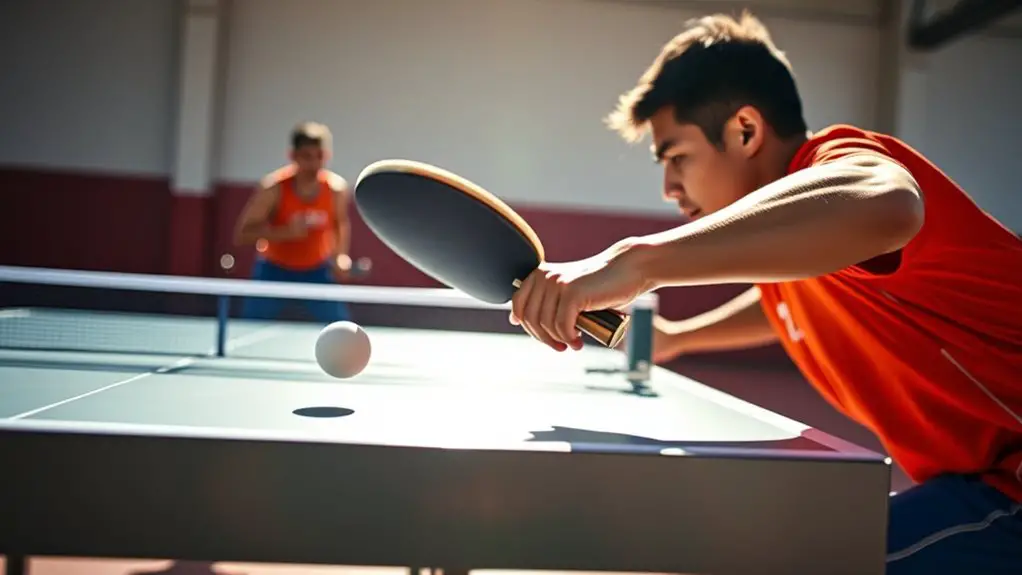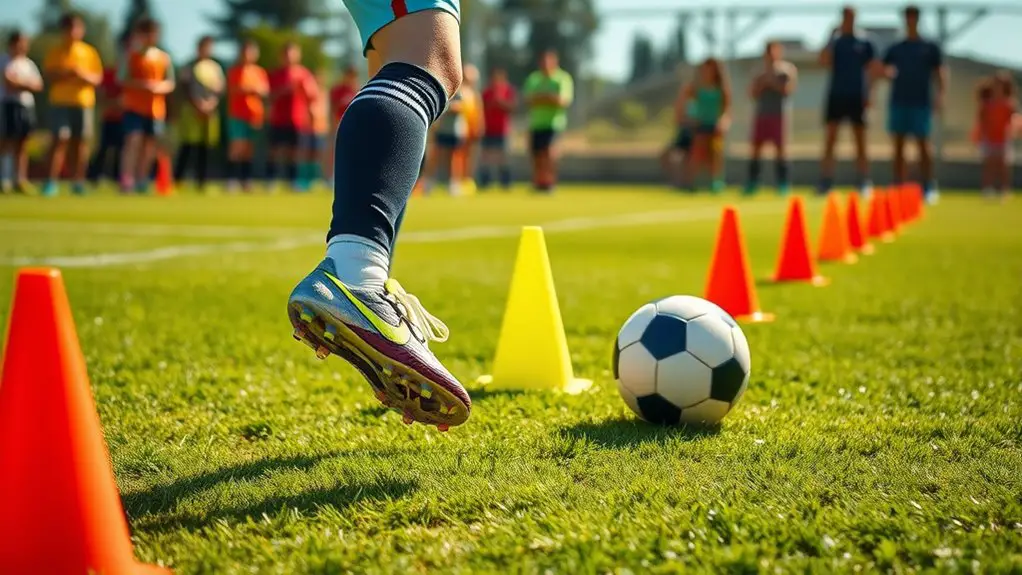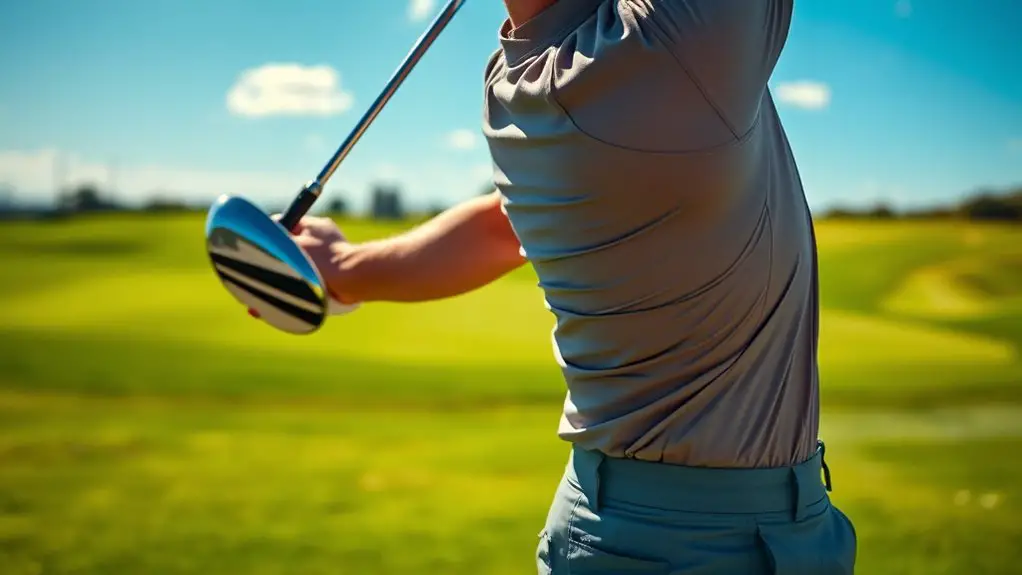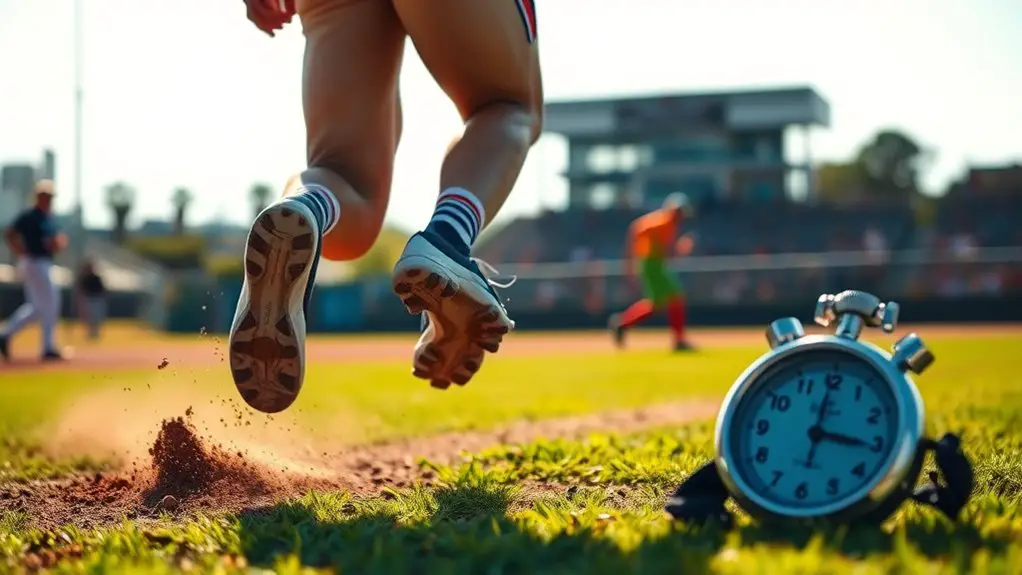Reaction speed plays an essential role in table tennis gameplay. Quick reflexes help you serve effectively, return shots, and anticipate your opponent's next move, which can give you a competitive edge. The faster you react, the better control you have over the game flow. Enhancing your reaction time through drills and mental strategies can greatly improve your performance. Discovering additional techniques can elevate your game even further, leading to greater success on the table.
The Importance of Reaction Speed in Serving
When you're serving in table tennis, reaction speed can make all the difference. It's not just about slamming the ball; it's about mastering serving techniques that put your opponent on the back foot. Quick reactions allow you to choose the right angle and spin, making your serve unpredictable. With strategic placement, you can send the ball to areas that challenge your opponent's reach, forcing them to react quickly and potentially making mistakes.
Your ability to read the game and anticipate your opponent's movements is vital. By varying your serves and using deceptive spins, you keep them guessing. Just imagine the thrill of placing the ball perfectly, watching them scramble in vain. Every serve you execute is a chance to assert your freedom on the table. So, hone your reaction speed and use it as a weapon in your serving arsenal, creating opportunities to dominate the game.
Enhancing Reaction Time for Effective Returns
To effectively return a serve in table tennis, enhancing your reaction time is essential. A quick response can make all the difference, giving you the freedom to control the game. Start incorporating reaction drills into your practice routine. Simple exercises like catching a ball or using a reaction ball can sharpen your reflexes and improve your hand-eye coordination.
Don't forget about timing techniques; these are vital for getting into position and executing your returns with precision. Focus on your footwork and practice moving swiftly to the ball, as this allows you to react without hesitation. Additionally, incorporating agility drills into your training can significantly enhance your overall reflexes and response time.
Anticipating Opponent's Moves
How can you anticipate your opponent's moves in table tennis? It all starts with reading body language. By observing their stance, grip, and even eye movements, you can get hints about what they might do next. For instance, if their shoulders turn toward one side, they might be gearing up for a powerful shot in that direction.
Predicting shots becomes easier when you pay attention to these cues. The more you play, the better you'll get at recognizing patterns in your opponent's playstyle. Are they consistently favoring backhand strokes? Adjust your positioning accordingly. Additionally, enhancing your mental alertness through focused practice can significantly improve your ability to react swiftly to these cues.
Drills and Exercises to Improve Reflexes
Improving your reflexes in table tennis is essential for responding quickly to your opponent's shots. To sharpen your reaction speed, try incorporating these effective drills and exercises into your training routine:
- Ball Toss Drill: Have a partner toss a ball toward you at varying heights and angles. React quickly to hit it back, focusing on your timing and positioning.
- Multi-ball Drills: Your coach or a partner can feed multiple balls in quick succession. This helps you practice quick reactions and improves your ability to anticipate shots.
- Shadow Play: Practice your strokes without a ball. Focus on your footwork and positioning while imagining different scenarios. This builds muscle memory, enhancing your reflexes when the real game begins.
Mental Strategies for Quick Decision-Making
While physical training is essential for enhancing your reaction speed in table tennis, mental strategies play an equally important role in quick decision-making during matches. Developing cognitive flexibility allows you to adapt your tactics based on your opponent's moves. For instance, being aware of situational factors can help you make split-second choices about your next shot.
Here are some strategies to sharpen your mental game:
| Strategy | Description | Benefit |
|---|---|---|
| Visualization | Picture successful shots | Enhances confidence |
| Mindfulness | Stay present during play | Improves focus and reaction time |
| Pattern Recognition | Identify common play styles | Boosts decision-making speed |
| Scenario Planning | Anticipate various outcomes | Increases adaptability |
| Positive Self-Talk | Encourage yourself mid-match | Reduces anxiety |
Incorporating these strategies helps you respond quickly and effectively, giving you the freedom to play your best game. Additionally, practicing mindfulness and relaxation techniques can further enhance your ability to maintain composure under pressure.
Frequently Asked Questions
How Does Age Affect Reaction Speed in Table Tennis Players?
As you age, you might notice changes in your reaction speed, impacting your table tennis game. Youth performance often shows quicker reflexes, allowing younger players to respond rapidly to fast-paced rallies. Conversely, you may face senior challenges such as slower reaction times, making it tougher to keep up with younger opponents. However, with practice and strategy, you can still enjoy the game and find ways to adapt your playing style to maintain competitiveness.
What Role Does Nutrition Play in Enhancing Reaction Time?
Ever wondered what could give you that edge in a game? Nutrition's got your back! Carbohydrate timing can boost your energy, ensuring you're ready to react quickly. Pair that with smart hydration strategies, and you'll stay focused and sharp. When you're properly fueled and hydrated, your body responds faster, making those vital split-second decisions easier. So, embrace the freedom to enhance your game through what you eat and drink—it's a game-changer!
Can Equipment Choice Influence a Player's Reaction Speed?
Absolutely, your equipment choice can greatly influence your reaction speed. For instance, the type of racket you use can impact how quickly you respond to the ball. A lighter paddle weight often allows for faster movements, giving you that freedom to react more swiftly. If you're feeling weighed down by a heavier paddle, it might slow you down. So, consider experimenting with different rackets to find what best suits your play style!
Are There Specific Breathing Techniques to Improve Reflexes?
When it comes to sharpening your reflexes, you can't just sit on the fence! Breathing exercises can really help you sharpen your mental focus. Techniques like deep diaphragmatic breathing or box breathing can calm your mind and enhance your reaction time. By practicing these regularly, you'll feel more in control and ready to respond quickly. So, take a moment, breathe deeply, and watch how your reflexes improve as you embrace this freedom!
How Do Injuries Impact a Player's Reaction Speed?
Injuries can greatly impact your reaction speed, making recovery an essential part of your training. While you're healing, it's important to maintain mental focus; this helps you stay sharp even if your physical abilities are limited. You might find that some techniques, like visualization or light drills, can keep you engaged. Once you're back in action, you'll need to rebuild your agility and speed, so patience and dedication will be key.



